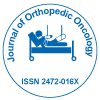Nuestro grupo organiza más de 3000 Series de conferencias Eventos cada año en EE. UU., Europa y América. Asia con el apoyo de 1.000 sociedades científicas más y publica más de 700 Acceso abierto Revistas que contienen más de 50.000 personalidades eminentes, científicos de renombre como miembros del consejo editorial.
Revistas de acceso abierto que ganan más lectores y citas
700 revistas y 15 000 000 de lectores Cada revista obtiene más de 25 000 lectores
Indexado en
- Google Académico
- Búsqueda de referencia
- Universidad Hamdard
- EBSCO AZ
- OCLC-WorldCat
- publones
- Pub Europeo
- ICMJE
Enlaces útiles
Revistas de acceso abierto
Comparte esta página
Abstracto
Uncemented Arthroplasty for Hip Pain and Fracture after Metastatic Disease and Multiple Myeloma: Case Series, Exploratory Graphical Analysis and Bayesian Network Modeling
Sergio PS Meirelles, Daniel CS Rebolledo, Luiz FM Correia, Andre M Baptista and Olavo P Camargo
We are not aware of previous cases series of uncemented arthroplasty for hip pain or fracture secondary to metastatic disease or multiple myeloma. Objective: To describe a case series using a combination of narrative, graphical exploratory analysis and Bayesian Network modeling. Methods: Case series of 34 patients undergoing uncemented and hybrid arthroplasty procedures secondary to hip pain or fracture secondary to metastatic disease or multiple myeloma. Case series is presented using a narrative following Kempen’s reporting guidelines, exploratory graphical analysis and Bayesian Network modeling with a structure based on expert opinion and parameters inferred from the data. Most common tumors included gastrointestinal, multiple myeloma and breast. A total of 26.3% (n = 5) of all of our procedures were performed secondary to fractures. Most devices were total (n = 16, 84.2%) rather than partial, uncemented (n = 12, 63.2%) rather than hybrid. Average time between surgery and first walk was 20 days, average length of stay of 13 days, with average patient survival of 589 days. Only one infection was reported. Uncemented and hybrid arthroplasty devices did not differ in relation to time to walk as well as length of stay in this sample. Conclusion: Our model should be used as the prior for the addition of subsequent patient samples, thus personalizing its recommendations to other patient populations.
Revistas por tema
- Agricultura y acuicultura
- Alimentación y Nutrición
- Bioinformática y biología de sistemas
- Bioquímica
- Ciencia de los Materiales
- Ciencia general
- Ciencias Ambientales
- Ciencias Clínicas
- Ciencias farmacéuticas
- Ciencias Médicas
- Ciencias Sociales y Políticas
- Ciencias Veterinarias
- Enfermería y atención sanitaria
- Física
- Genética y biología molecular
- Geología y Ciencias de la Tierra
- Ingeniería
- Inmunología y Microbiología
- Química
Revistas clínicas y médicas
- Anestesiología
- Biología Molecular
- Cardiología
- Cirugía
- Cuidado de la salud
- Dermatología
- Diabetes y Endocrinología
- Enfermedades infecciosas
- Enfermería
- Gastroenterología
- Genética
- Inmunología
- Investigación clínica
- Medicamento
- Microbiología
- Neurología
- Odontología
- Oftalmología
- Oncología
- Pediatría
- Toxicología

 English
English  Chinese
Chinese  Russian
Russian  German
German  French
French  Japanese
Japanese  Portuguese
Portuguese  Hindi
Hindi